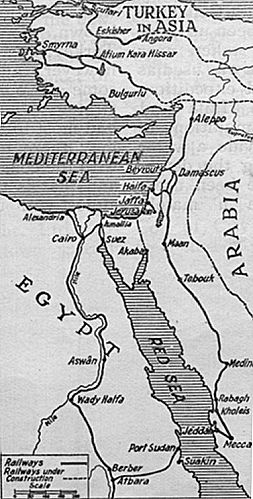 Map of the Hedjaz Railway Showing extension to Mecca and Jeddah.
Map of the Hedjaz Railway Showing extension to Mecca and Jeddah.
|
The Hedjaz Railway
In the recent attempted invasion of Egypt by the Turks across Arabia and the Suez Canal the Hedjaz Railway appears to have been utilised, for if reports given by prisoners taken near Ismailia are true, the station at Seila was used as the detraining point for the ill-fated expedition. Here soldiers were brought from Haifa and Damascus with their stores and munitions of war, such as they were. To provide a water supply for the troops whilst crossing the desert pressed steel boats are said to have been used, which it was ultimately employed in crossing the Canal; these arrangements must surely have been due to Teutonic ingenuity.
The Hedjaz Railway is unique insomuch as it was ostensibly constructed to enable Mohammedans to be better able to make pilgrimages to their Holy Cities of Medina and Mecca. Its sacred character appealed to the charitable feelings of the Faithful, and subscriptions poured in for making from all Mohomedan countries. In fact taxes were levied, and in force until quite recently, which were supposed to go towards the construction and equipment of the line. Public advertisements, theatre programmes, etc. had all to bear a revenue stamp of about ½d. Value, which was supposed to go to the funds of this railway, but whether it did or not, or whether the line was secretly subsidised by the Germans is not known, though this tax, as many others in Turkey, was frequently evaded. Recent events however, appear to strengthen the theories some of our military experts advance that strategy, and not religious considerations had most to do with its inception. Be this as it may, there is one very notable fact connected with its construction and equipment of the line, and that is that the material and rolling stock, almost without exception, came from Germany, and engineers from the Fatherland were practically the only foreigners engaged on the work.
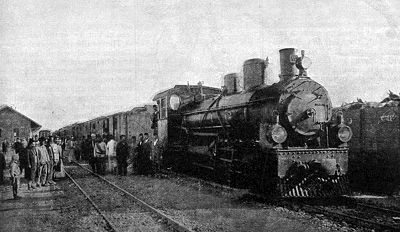 Train of the Sacred Caravan, Ready to Depart Cadem Station, Hedjaz Railway.
Train of the Sacred Caravan, Ready to Depart Cadem Station, Hedjaz Railway.
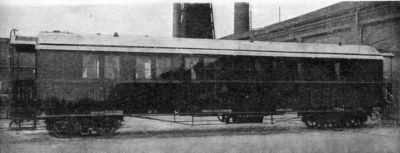 First and Second Class Bogie Carriage, Hedjaz Railway.
First and Second Class Bogie Carriage, Hedjaz Railway.
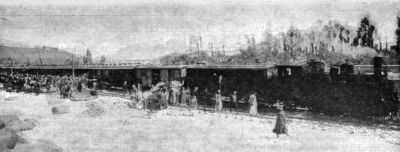 Pilgrims' Train at the New Station, Damascus, Hedjaz Railway.
Pilgrims' Train at the New Station, Damascus, Hedjaz Railway.
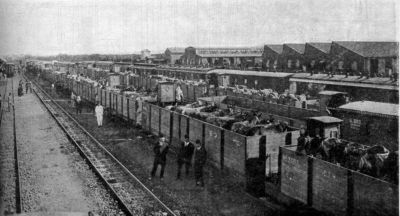 Cadem Station and Railway Shops, Hedjaz Railway.
Cadem Station and Railway Shops, Hedjaz Railway.
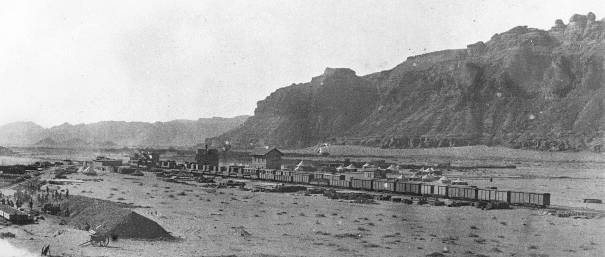 El Ula station as shown on page 10 of Lawrence's Air Force article.
El Ula station as shown on page 10 of Lawrence's Air Force article.